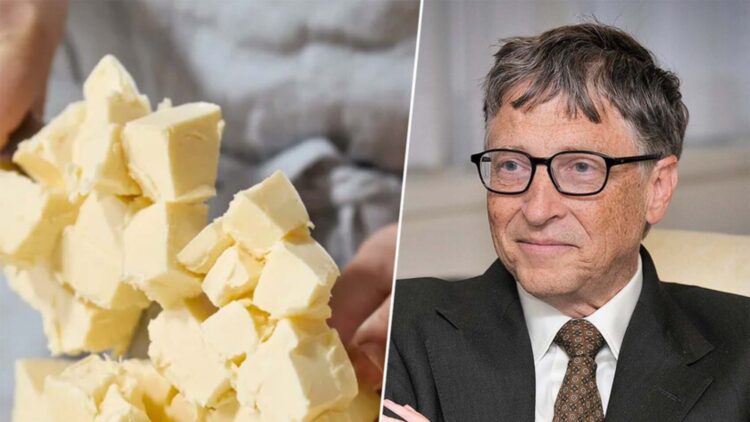As if taken from a news story straight out of The Matrix, the company Savor, backed by Orca Sciences, has developed a way to produce butter that, according to the developers, tastes exactly like the original. The company, which has the support of Bill Gates, explains that the molecular structure is identical to conventional butter, while achieving its goal of reducing the CO2 emissions generated by regular production. Researchers at the University of California, Irvine analyzed this concept in the journal Nature Sustainability, confirming that this process emits less than a third of the emissions of conventional agriculture, as explained by the study’s lead author, Steven Davis.
This production process converts CO2 from the air and hydrogen from water into edible fats through advanced biochemical processes, all without generating emissions into the atmosphere or using agricultural land, not to mention animal handling, especially cows. The vision of this company is to move towards farm-free food, which is currently expensive, but if costs can be reduced, the economic and environmental impact would be more than considerable.
Food production through chemistry and biochemistry
All those ideas of eating through pills or generating food through chemistry and biochemistry are ceasing to be concepts from science fiction movies and are becoming an increasingly close reality. The company Savor, backed by Orca Sciences, claims to have created lab-made butter that tastes exactly like traditional butter, but is literally made from air. Yes, just as you read. This project uses carbon dioxide, water, and hydrogen to produce fats identical to natural ones.
Bill Gates, one of the main investors in this company, explained on his blog that it “does not release greenhouse gases and uses less than one-thousandth of the water required by traditional agriculture.” According to him, it is a “sustainable, scalable, and delicious” production, and he defends its taste by saying that “it tastes just as good as the real thing because chemically, it is”.
How is air-based butter produced?
The company’s goal is to eliminate agriculture and livestock from the food production process, and it accomplishes this by converting CO2 from the air and hydrogen from water into edible fats through advanced biochemical processes. All of this is done without generating emissions into the atmosphere or using agricultural land. It is a product whose molecular structure is identical to that of traditional butter, but without the need for cows, pasture, or producing emissions. According to researchers at the University of California, Irvine, who defined this concept in the journal Nature Sustainability, lab-grown fats can be produced with less than a third of the emissions generated by conventional agriculture.
The lead author of the study, Professor Steven Davis explained, “The synthesis of food without agricultural raw materials could prevent enormous amounts of emissions and protect the planet’s biodiverse lands.” The goal of this project is to be able to produce food without needing to rely on factors such as climate, soil, or animals. According to Davis, “At any scale, this would ease the competition between ecosystems and agriculture.” In addition to producing butter, the project is also developing fats similar to those in meat, milk, and palm oil. The aim is to achieve “farm-free” food, through which food can be created with clean chemistry and scientific precision.
Costs of this type of food production
Nowadays, the technology to develop these types of processes is highly expensive, but researchers argue that scaled-up production could be viable in the near to medium term. According to Davis, “the beauty of fats is that it’s all chemistry: they can be produced under high pressures and temperatures with great efficiency.” Beyond the curiosity that the headline may spark, being able to produce butter from CO2 raises the possibility of a future where food can be made without the need to destroy the environment. It is expected that if production costs are reduced, the global environmental and economic impact would be more than considerable.
